For years we’ve known the Polaris Slingshot as the tire-burning, open top, two-passenger three-wheeler that’s great for weekend cruising and some quick canyon jams, and it’s still exactly that. Now the platform is a claimed 70-percent new with an all-new ProStar 2.0L four-cylinder engine and AutoDrive transmission, making it faster and easier to drive than ever. But with base cost moving from $21,000 to $26,499, those updates come at a serious cost. Is an easier-to-drive and more premium treatment the key to new Slingshot success, or will the increased price tag and less-connected driving experience prove to be shifts in the wrong direction?
Getting into the new Slingshot, everyone will first notice the updated cockpit. In the center, you’ll see the same 7-inch Ride Command system we’re now used to seeing in Indian motorcycles, with Bluetooth controls, various vehicle displays and readouts, as well as turn-by-turn navigation for an additional price. The steering wheel is now leather wrapped and more premium feeling, with cruise control and stereo controls located in the center. Legroom remains the same, which is plenty adequate, even for taller occupants. Storage also remains essentially unchanged, with the glove box and two compartments behind the seats maintaining their size and shape, but four small phone storage compartments located throughout the cockpit and a small center compartment are added. Cupholders have been moved and are now a little bigger, and of course the obvious, no shifter, just the three R, N, and D buttons.
The new engine is smooth and strong, putting out a claimed 178 hp at 8,500 rpm. What Polaris calls AutoDrive transmission operates like a normal automatic transmission, with smooth shifts at the appropriate rpm. With three levels of traction control, you’re able to choose how squirrelly you want to get, with TC fully engaged proving to be the fastest, as it maintained the most traction through turns. With the new transmission and traction control, the Slingshot is now much easier to drive like a normal car, but still able to burn that rear tire when you want, though the connection to the road and roadster feel have changed completely. The manual transmission and clutch of previous years had a raw feel and more direct connection to the road. The new transmission is much more of a “press and go,” experience, taking away some of the adrenaline-inducing wild factor that we loved, but also opening doors to more drivers who don’t know how to use a manual transmission. Still, any way to manually select the gear while driving, though buttons or paddle shifters for example, would have struck a nice balance between the two and radically improved the experience.
In previous years, we had recommended the base-model Slingshot over all others. It was the easiest way to get the most pure experience. Now, even though the Slingshot has been upgraded and improved in many ways, Polaris didn’t really expand the capability of the vehicle. The new engine and transmission are nice, but the limiting factors for us were never the transmission or the engine. Comfort features like blown air, heated seats, and more storage would have gone a long way toward improving casual use while not requiring such a steep price increase. But now with the most affordable Slingshot model costing more than a base-model 2020 Camaro, we’ll see if this attempt to make the vehicle easier to drive will actually make it more approachable, or if the move to a higher price bracket will bring it out of reach for aspirational owners.










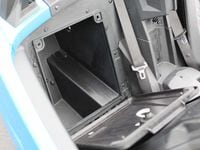



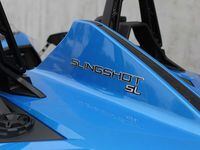
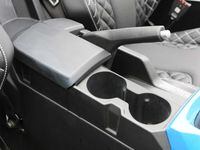



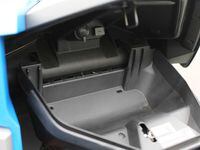
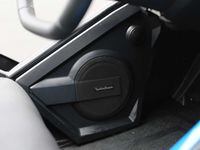
/cloudfront-us-east-1.images.arcpublishing.com/octane/RUDVL2USMVGMHJKLZNVPEPNZLQ.jpg)
/cloudfront-us-east-1.images.arcpublishing.com/octane/2ZCBATCAOBBHRM7RD6I2634QOA.jpg)
/cloudfront-us-east-1.images.arcpublishing.com/octane/CLTKZNNATFHF5G7DRCWIIMIICA.jpg)
/cloudfront-us-east-1.images.arcpublishing.com/octane/4FYW5AN7YVFZBMWPAZ6COUXJJ4.jpg)
/cloudfront-us-east-1.images.arcpublishing.com/octane/VUOTFUMRZBFILJ4TBSKYNRPZDM.jpg)
/cloudfront-us-east-1.images.arcpublishing.com/octane/A2TMJNBKPBEQJEF6PB2Q5PGQHM.jpg)
/cloudfront-us-east-1.images.arcpublishing.com/octane/C3WGBZCFABC7XKBCFCCXDWYWME.jpg)
/cloudfront-us-east-1.images.arcpublishing.com/octane/CCPZFYVVRBF2DLPMDYKPF4TMME.jpg)
/cloudfront-us-east-1.images.arcpublishing.com/octane/4QSMPPK4X5HE5D7QUFJLYC6GLY.jpg)
/cloudfront-us-east-1.images.arcpublishing.com/octane/7EG6FR6QOJGR7FFROLIPDUVTVM.jpg)
/cloudfront-us-east-1.images.arcpublishing.com/octane/QC73NNGYHZDWTNVTLNABEDJJ2Y.jpg)
/cloudfront-us-east-1.images.arcpublishing.com/octane/THUUBJNOAFCNHGFM34RRWJGVX4.jpg)
/cloudfront-us-east-1.images.arcpublishing.com/octane/UGMQGLINLRBVHC6U6Y4HJHQ3RY.jpg)
/cloudfront-us-east-1.images.arcpublishing.com/octane/ENCTP2GIJ5DFVH2QPFJRFJ3IDI.jpg)
/cloudfront-us-east-1.images.arcpublishing.com/octane/2W2YYLKRUJHW5CQOQSZPOVNHI4.jpg)
/cloudfront-us-east-1.images.arcpublishing.com/octane/ULSZOOV3GRGHLFYHABDDYIHJT4.jpg)
/cloudfront-us-east-1.images.arcpublishing.com/octane/52GPADYLYZFEDJ6WKHNF44PYNU.jpg)
/cloudfront-us-east-1.images.arcpublishing.com/octane/SWMZI3VS7NANXHECY5KVQO47BE.jpg)
/cloudfront-us-east-1.images.arcpublishing.com/octane/6F5UZMOWJFDRXDHN66HSW7725E.jpg)
/cloudfront-us-east-1.images.arcpublishing.com/octane/SNQEMPXRCBDKPCXJIN24D4J22M.jpg)
/cloudfront-us-east-1.images.arcpublishing.com/octane/GXHESE63GNGPLEOJ2JJANNGQ5Q.jpg)
/cloudfront-us-east-1.images.arcpublishing.com/octane/3USOOXJEHJB6NB2NNKU73HMRVY.jpg)
/cloudfront-us-east-1.images.arcpublishing.com/octane/6GLBGD7S75B7JP2GRYNEJO4TBE.jpg)
/cloudfront-us-east-1.images.arcpublishing.com/octane/SCA4CUE6YBHGRHKU7HEG3YHWGQ.jpg)